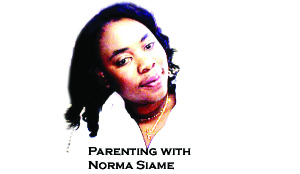 LAST week’s article touched on the subject of sexual abuse and tips parents can employ to protect their kids from potential sexual predators.
LAST week’s article touched on the subject of sexual abuse and tips parents can employ to protect their kids from potential sexual predators.
But what if a child has already had the misfortune of being molested? What signs should parents watch out for? A website, stopitnow.org, dedicated to issues related to stopping sexual abuse among children has a list of helpful tips parents can employ to assess kids.
It is important to note that any one sign doesn’t mean that a child was sexually abused, but the presence of several suggests that you begin asking questions and consider seeking help. Keep in mind that some of these signs can emerge at other times of stress such as: During a divorce, death of a family member or pet, problems at school or with friends and other anxiety-inducing or traumatic events.
Behaviour you may see in a child or adolescent includes frequent nightmares or other sleep problems without an explanation.
The child seems distracted or distant at odd times and has a sudden change in eating habits by refusing to eat or drastically increases appetite. The child might experience trouble swallowing.
You might also notice sudden mood swings: Rage, fear, insecurity or withdrawal.
Leave “clues” that seem likely to provoke a discussion about sexual issues. Writes, draws, plays or dreams of sexual or frightening images.
Develops new or unusual fear of certain people or places and refuses to talk about a secret shared with an adult or older child.
Talks about a new older friend and suddenly has money, toys or other gifts without reason. Remember, sexual predators usually use money or gifts as lures.
Thinks of self or body as repulsive, dirty or bad and exhibits adult-like sexual behaviors, language and knowledge.
Signs more typical of younger children include an older child behaving like a younger child (such as bed-wetting or thumb sucking).
Has new words for private body parts commonly used by adults. Resists removing clothes when appropriate times (bath, bed, toileting, diapering). Asks other children to behave sexually or play sexual games or mimics adult-like sexual behaviours with toys or stuffed animals.
Wetting and soiling accidents unrelated to toilet training.
Signs more typical in adolescents include self-injury (cutting, burning), inadequate personal hygiene and drug and alcohol abuse. Sexual promiscuity, running away from home, depression, anxiety and suicide attempts.
Fear of intimacy or closeness, compulsive eating or dieting.
Physical signs of sexual abuse are rare. If you see these signs, take your child to a doctor.
Your doctor can help you understand what may be happening and test for sexually transmitted diseases.
A child might experience pain, discoloration, bleeding or discharges in genitals, anus or mouth.
Persistent or recurring pain during urination and bowel movement.
What can a parent do if he or she sees warning signs? Create a safety Plan. Don’t wait for “proof” of child sexual abuse.
Look for patterns of behavior that make children less safe. Keep track of behaviours that concern you. This simple list of possible signs can be a helpful tool.
For comments and contributions email norma.siame@gmail.com






